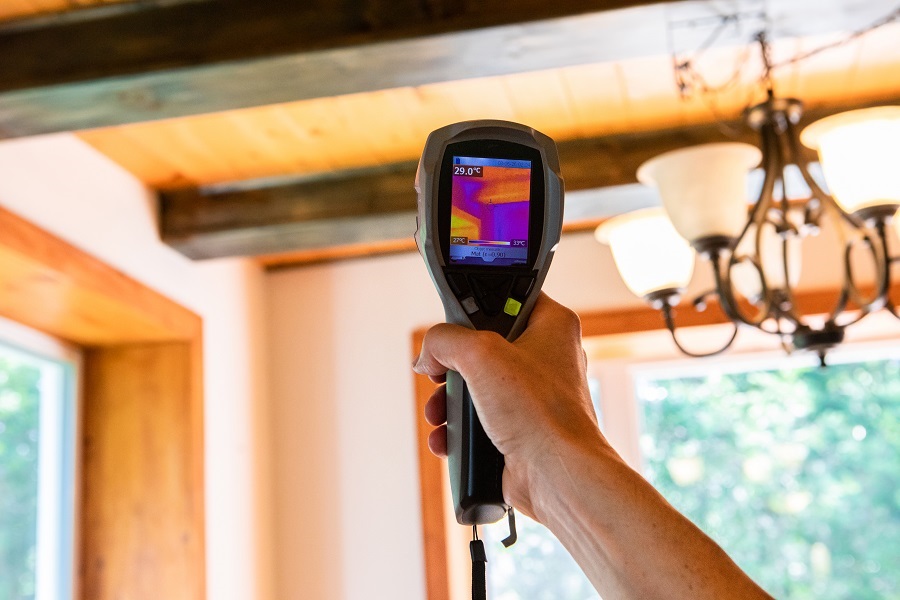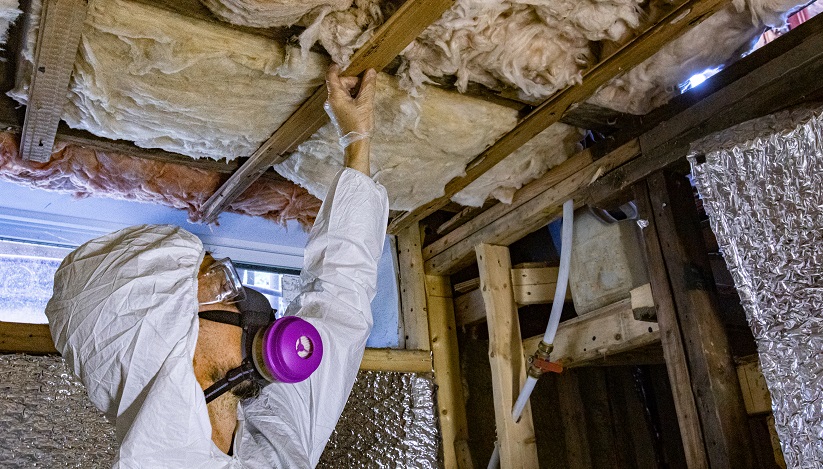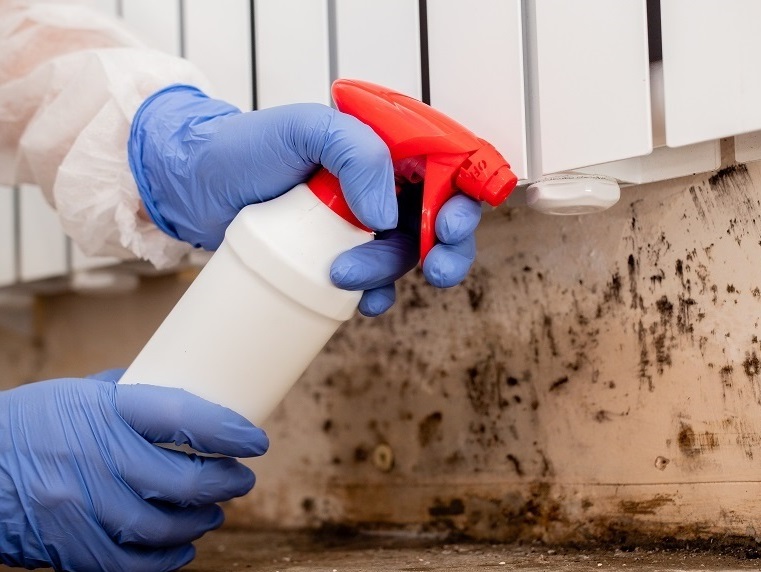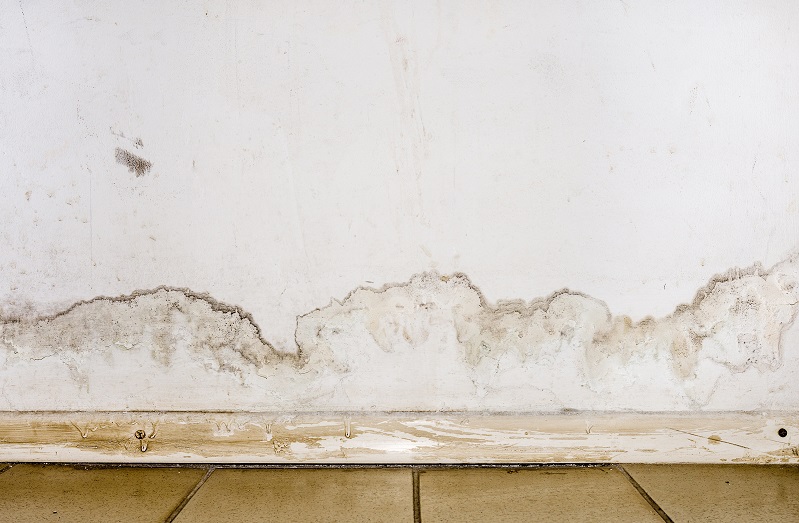What is Wet Rot?
Wet rot is a parasite that can be found in wet timber. It warps the timber, making it swell and causing the fibres to separate, this can lead to loss of strength, and eventually, crumbling in the timber structure. Wet rot can trigger wood decay, making it lose its structural integrity and to eventually fall apart. Wet rot in structural wood is due to increased exposure to moisture. This may be from the ‘wet’ side of a house, penetrating damp or faulty plumbing. Wet rot is fungi that can spread and inflict damage on neighbouring timbers.

What is the Difference Between Dry Rot and Wet Rot?
Dry rot can cause quick and extensive damage to structural timber as it circulates the affected property. Wet rot, however, occurs more often but is typically less severe; decay in such cases is limited to the area affected by water. When fungi are absent, dry and wet rot can be differentiated by considering the difference in timber colour and the extent of damage noticed on the timber according to the progression of either type.
What causes Wet Rot?
Certain environmental conditions dictate the appearance of wet rot spores on timber. The primary cause of wet rot is moist timber. Moisture is a major factor in the progress of wet rot formation. Consequently, the timber begins to display obvious signs of decay.
The Dangers of Wet Rot in Poplar
Wet rot can have a devastating effect on your home; it can even bring down its market value. If you have wet rot, it needs to be treated quickly, or it will continue to infect your house. Recent surveys of 2,038 London homeowners asked whether they experienced wet rot, where the rot had taken hold and whether they were able to stop it recurring in the future.

Damp Proofing Can Help Prevent
- Rising / Penetrating Damp
- Ingress of Water
- Salt Crystallization
- Plaster Breakdown
- Damp Staining
- Wet Rot / Dry Rot
What are the Warning Signs of Wet Rot?
Signs of wet rot in timber, or the conditions necessary to accommodate the growth of the fungus, can vary depending on the cause and type of moisture it is exposed to. Peeling wallpaper (especially at the corners), malfunctioning central heating boiler, a persistent musty smell, and malfunctioning cookers are some easy-to-spot signs of wet rot. Some common locations for wet rot include underneath the kitchen sink, roof spaces/attics, and along external walls. Wet rot will normally affect older structures which have been constructed with timber frames and not modern species like Meranti and Sapele. Timber from beneath the ground level up to one-floor level is also commonly affected by wet rot. Recognising wet and dry rot is the first step on the road to tackling it. If you notice any signs of wet rot infestation, then you should carry out a damp survey as soon as possible.
Contact Southern Damp Proofing Now to Speak With an Expert
How and When Should I Look for Wood Rot?
It should be conducted annually. Similar to spring cleaning, you need to inspect your home for telltale signs of wood rot or damp, and the period reserved for weatherproofing activities before winter is an ideal time to do this. You need a flashlight and a screwdriver.

Use the flashlight to examine the wood in the crawl room or basement for discolouration around the border wood plate sitting directly on the concrete wall. Use the screwdriver test wherever necessary. Check floors and walls for signs of discolouration underneath the sinks or water leakage around the water heater and baths/tubs.
How do we identify wet rot?
- Localised fungal growth on timber
- The soft, spongy feel of timber; the affected area appears darker than the surrounding timber.
- The soft and spongy texture of rotting timber; the affected region often looks darker than the other parts.
- That spongy, soft feel timber gets when affected by wet rot; the affected parts are darker than the other areas.
- The spongy, soft texture of rotten timber; the infested area is darker than the other parts.
- The springy feeling that is an indicator of wet rot; the affected area is often darker than others around it.
- Crumbling of affected dry timber into particles.
- Dry timber crumbling into particles.
- The crumbling of infested timber into dry particles.
- Dried-out timber disintegrating into particles.
- The disintegration of rot-eaten timber into particles.
- Shrinking timber
- Bleaching wood in window and door frames
- Flaky or damaged paint
- A musty, damp smell
What to Do After You Detect Wet Rot?
You need to engage a damp expert to treat wet rot and ensure the source of the moisture ingress is identified and stopped to ensure that the problem does not recur. For further information about treating wet rot, call us on 020 7971 1329 and let Southern Damp Proofing help.
Wet Rot and Damp Proofing in Poplar
If you need help with Wet Rot or Damp Proofing you are in the right place. If you notice that you have wet or damp rot in your home, then you should call us to repair the problem at once, as wet rot will spread quickly and lead to dangerous health risk and a loss of structural integrity if not dealt with promptly. One of our qualified damp surveyors will be able to determine the cause of the problem and the best course of action to rectify the issue.

Contact Southern Damp Proofing Now to Speak With an Expert
Wet Rot Treatment Specialists in Poplar
With more than 20 years of experience, we are one of Poplar’s leading wet rot specialists; offering site surveys and cost estimates at no charge to private and commercial property owners. Our wet rot experts will examine your property and come up with solutions to cut off the source of moisture ingress. Our team of experts can identify and offer lasting treatments for different types of wet rot using advanced methods.
Wet Rot Treatment in Poplar
Wet rot can be found predominantly in areas that are constantly exposed to moisture. Nevertheless, during treatment we don’t just get rid of the wet rot, we tackle the issue at its source. We identify how the timber gets in contact with moisture and block it against future occurrences. You should make sure wet rot treatment is handled by professionals to guarantee the best results. Delaying the treatment will only drive up the cost of eventual repairs. It is advisable to contact professionals like Southern Damp Proofing when you identify any sign of damp or wet rot development in your building. We have the expertise to effectively treat wet rot. Southern Damp Proofing is always ready to help, we quickly identify the cause of the humidity and the affected areas. Don’t wait till the timber starts falling off, call 020 7971 1329 today or fill our contact form and we will reach out to you.
Our Wet Rot Treatment Process in Poplar
The same with other property-related repairs, the longer you wait, the worse it gets. If you identify the presence of the fungal rot early, treatment can usually be confined to a small area of timber. Severe cases where the rot has advanced across the breadth of timber could mean you will need major repair work or replacements for the timber beams. Treating wet rot involves a series of steps. The treatment of any fungus-related issue involving timber should start by protecting it from damp. If there is a seepage of water into your home or timber, regardless of whether the cause is broken guttering, condensation, or anything else, we locate the source of water/moisture ingress and take corrective action. Contractors or builders who do not have the required expertise in rot treatment often opt to replace the affected wood. Such efforts are usually followed by spraying chemical preservatives on the area in question. This method will end in disaster. If you harbour the slightest suspicion that you could be facing a wet rot problem in your property, our team at Southern Damp Proofing is ever ready to help you identify, remove and treat it.
What happens to Wet Rot if left untreated?
If you fail to treat wet rot, the structural timber in your property will eventually weaken and, in certain cases, will prove a threat to the safety of residents in the home. When rot sets in, the timber becomes spongy and soft, and caves in when you prod it with a sharp edge such as a knife or screwdriver. The final result is that the timber becomes less structurally sound, and the worst-case scenario could see your building condemned if it continues to spread. Call Southern Damp Proofing on 020 7971 1329 and talk with our experts today!
Contact Southern Damp Proofing Now to Speak With an Expert
What is the cost of Wet Rot Treatment in Poplar?
Rot has devastating effects on properties. The cost of repairs and damp proofing is based on the type and extent of damage done to the timber, however, don’t be discouraged. We are always willing to provide our wet rot treatment services in Poplar at an affordable cost for all our clients. We advise you on the right decisions for the wellbeing of your family and your home.
How to prevent wet rot?
At all times, wood should be kept dry to avoid cases of rot. Wood hardeners are another excellent precautionary measure. The hardener provides an extra layer of protection against rot. The most vulnerable areas in a building are the window boxes and sills, including timber beams that haven’t been damp proofed and stand close to brickwork.
Talk to Our Wet Rot Treatment Experts Today!
Call 020 7971 1329 today to speak to one of our experts concerning wet rot treatment in your building.
FAQs
Is there a DIY treatment solution?
Can Wet Rot Cause Health Problems?
Is Wet Rot Capable of Spreading?
For Top Quality Damp Surveys & Treatments
Other Areas We Cover
- Wet Rot Treatment in Northwood, London
- Wet Rot Treatment in Orpington, London
- Wet Rot Treatment in Paddington, London
- Wet Rot Treatment in Penge, London
- Wet Rot Treatment in Pinner, London
- Wet Rot Treatment in Purley, London
- Wet Rot Treatment in Putney, London
- Wet Rot Treatment in Rainham, London
- Wet Rot Treatment in Richmond-Upon-Thames, London
- Wet Rot Treatment in Richmond, London